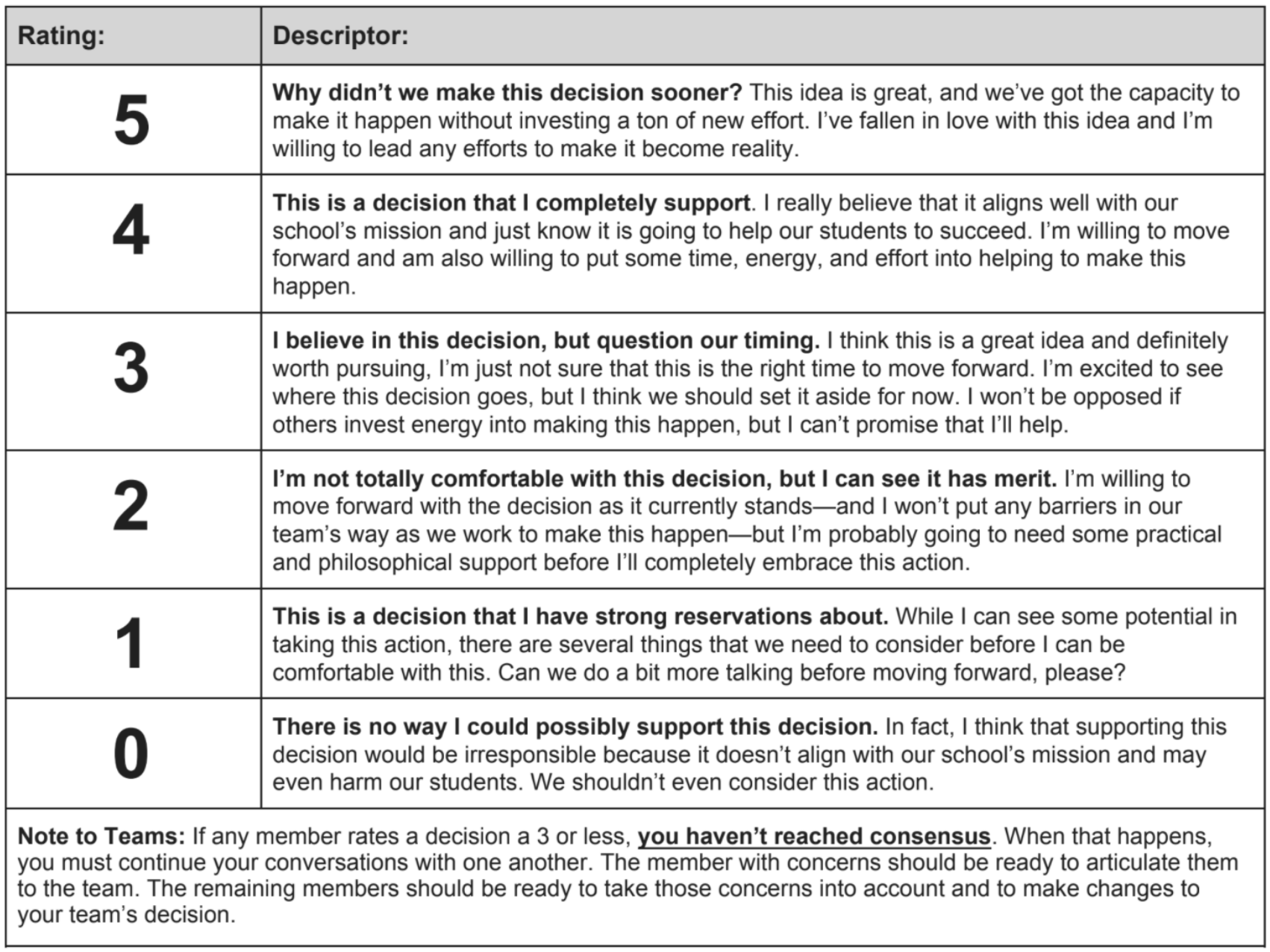Decision-Making Protocols for High Performing Teams
By Tammy Gibbons, AWSA Director of Professional Development & Information Assigning people to teams is a start, but true collaboration doesn’t simply happen by putting professionals in a room together. As many Wisconsin schools send teams to professional development on collaborative teaming and study ways in which teams operate to fully maximize a school’s vision and mission, often there are some simple strategies that are missing and overlooked but may have a large influence on the team’s productivity and impact. For improved results for students to be realized, we need to expect and appreciate conflict on a team because, according to Lencioni (2012) in The Five Dysfunctions of a Team, conflict is:
Since most teams find themselves in disagreement from time to time, having a process for addressing it keeps a team from operating in silos, creating alliances, or keeps members from going rogue. One of those strategies is empowering teams to be effective decision makers. How teams spend their time, what they do when the data suggests a change is needed, or determining when to employ a new direction, these all require a process for teams to find consensus and make decisions. If your teams don’t have a decision-making process and related protocols, consider making this a priority as you begin to think about the next school year. If you google “decision-making protocols” you’ll likely see many similarities to include scale range, verbiage, etc. For teams to employ a process, they also need norms/commitments/agreements that suggest the team will likely use the process when decisions need to be made. The process itself doesn’t ensure that the team is effective at collaboration, but when teams have working agreements, the likelihood that the process will positively impact future performance is greater. Bill Ferriter, educator and Solution Tree consultant on Professional Learning Communities, shares his own department’s protocols and processes and discusses their impact with teams across the nation. In the example below, you’ll note the levels of decision making but also what happens when someone may not fully support the decision on the table.
Ferriter, 2019 Solutiontree.com “We’re Meeting, Now What?” For example, in his “Note to Teams” you’ll see that if any member of the team rates the decision a 3 or less, the team does not finalize the decision at that moment. It’s important to note that this vote does not end the decision-making process. The team decides what the time frame will be that these voters get to bring their own compelling evidence to the table for discussion with the group. A group member cannot simply vote a decision down based on feelings, resistance to change, etc. They must remain a contributor to the decision in a productive way that allows other members of the team to also be learners. This process is important for all kinds of teams; school staff, leadership teams, departments, grade levels, etc. Making decisions that support a school’s mission and vision is everyone’s priority and teams need feedback and strategies to ensure their processes and protocols help them manage and maximize time, but also to reflect on the impact of the decisions they are making. Influencing teams to employ protocols and processes that keep teams moving in efficient, productive, and effective ways require school leaders who are aware of the look fors on high-performing teams. These leaders, acting as coaches, regularly give feedback to provide team members the recognition, nudging, and support they need to keep improvement at the forefront. Decision-making protocols are one strategy, that if employed with regularity and clarity, can be transformational for a team. AWSA offers a number of academies that address high impact teams, culture, and coaching. Visit the AWSA website for more professional learning information and opportunities. References:Lencioni, P. (2012). The five dysfunctions of a team. San Francisco, CA: Jossey-Bass. Ferriter, W. (n.d.). [Web log post]. https://blog.williamferriter.com/
|

